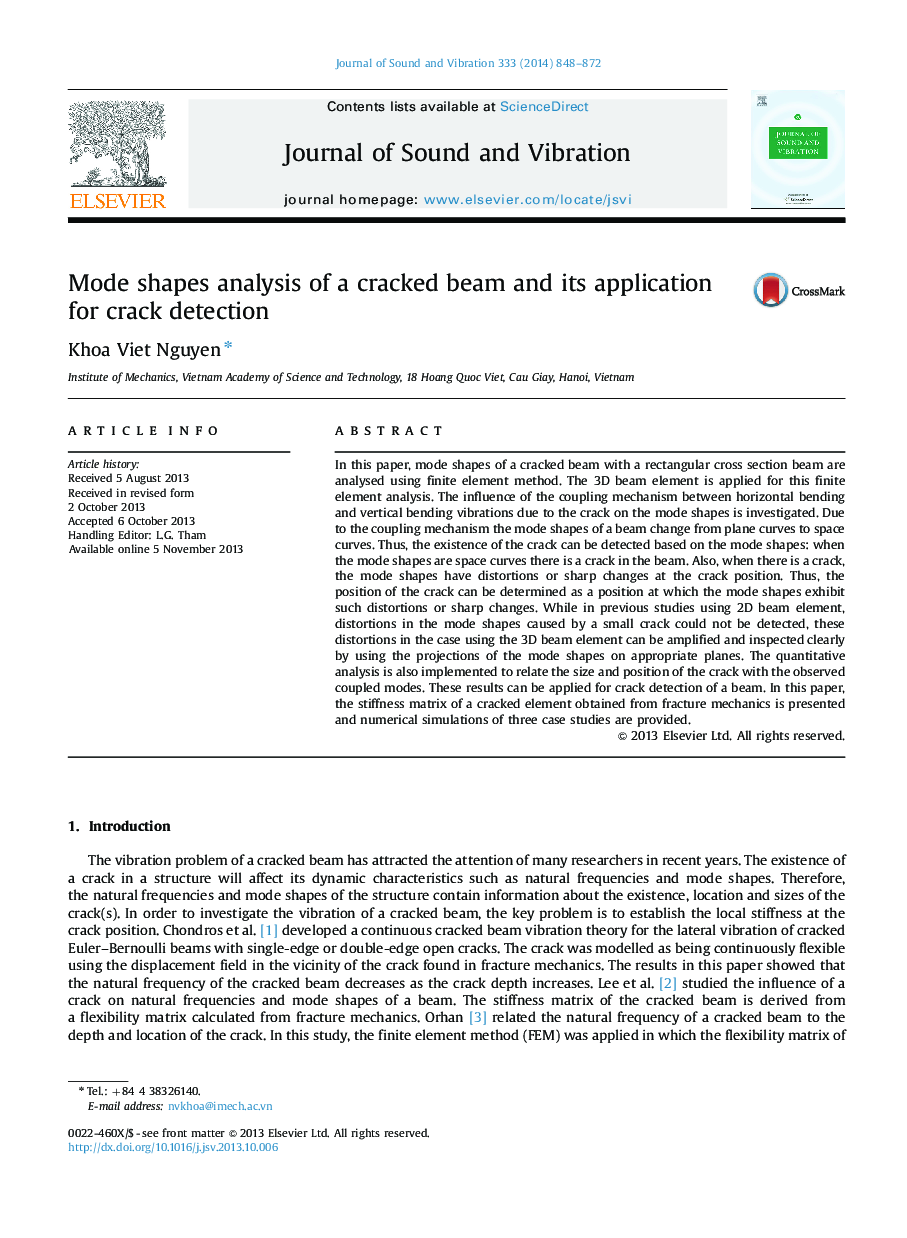| Article ID | Journal | Published Year | Pages | File Type |
|---|---|---|---|---|
| 10289341 | Journal of Sound and Vibration | 2014 | 25 Pages |
Abstract
In this paper, mode shapes of a cracked beam with a rectangular cross section beam are analysed using finite element method. The 3D beam element is applied for this finite element analysis. The influence of the coupling mechanism between horizontal bending and vertical bending vibrations due to the crack on the mode shapes is investigated. Due to the coupling mechanism the mode shapes of a beam change from plane curves to space curves. Thus, the existence of the crack can be detected based on the mode shapes: when the mode shapes are space curves there is a crack in the beam. Also, when there is a crack, the mode shapes have distortions or sharp changes at the crack position. Thus, the position of the crack can be determined as a position at which the mode shapes exhibit such distortions or sharp changes. While in previous studies using 2D beam element, distortions in the mode shapes caused by a small crack could not be detected, these distortions in the case using the 3D beam element can be amplified and inspected clearly by using the projections of the mode shapes on appropriate planes. The quantitative analysis is also implemented to relate the size and position of the crack with the observed coupled modes. These results can be applied for crack detection of a beam. In this paper, the stiffness matrix of a cracked element obtained from fracture mechanics is presented and numerical simulations of three case studies are provided.
Related Topics
Physical Sciences and Engineering
Engineering
Civil and Structural Engineering
Authors
Khoa Viet Nguyen,
